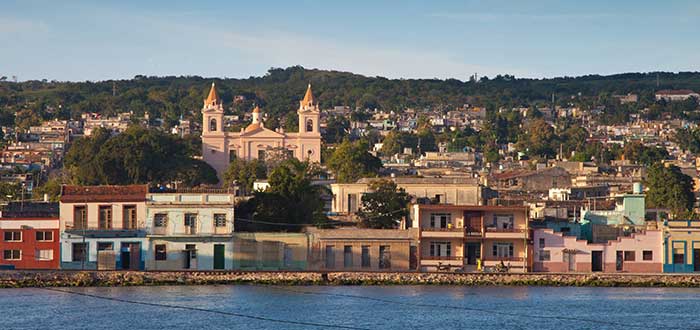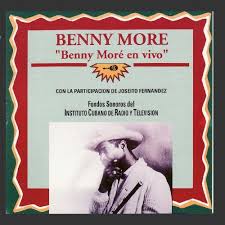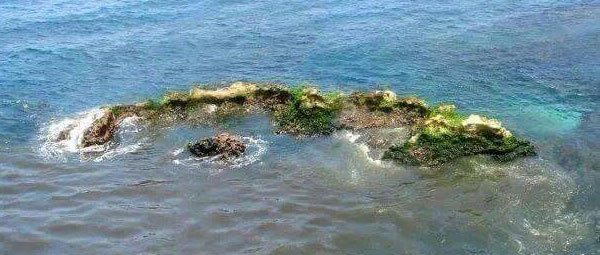 BENNY MORÉ, EN SU NUEVO ANIVERSARIO “EL BARBARO DEL RITMO” SIGUE ENTRE NOSOTROS.
BENNY MORÉ, EN SU NUEVO ANIVERSARIO “EL BARBARO DEL RITMO” SIGUE ENTRE NOSOTROS.
El 24 de Agosto de este año se cumplen 101 aniversario del nacimiento del “Barbaro del Ritmo”, el que fuera uno de los musicos cubanos más populares de todos los tiempos, Benny More.
A quienes todavia nos encantan disfrutar de sus melodías, tal vez lo que más nos llame la atención sea su innato sentido musical, ya que nunca fue a la academia, y su fluida voz de tenor, cualidades que lo convirtieron en maestro de todos los géneros de la música cubana, aunque se destacó, particularmente, en el son montuno, el mambo y el bolero.
Según el testimonio de su madre, Virginia Moré, su primer instrumento se lo fabricó a la edad de seis años, con una tabla y un carrete de hilo. A edad muy temprana también abandonó la escuela para dedicarse a las labores del campo, y más tarde, a los 16 años, formó parte de su primer conjunto musical.
Seguidamente dejaría su ciudad natal Santa Isabel de las Lajas para trasladarse a La Habana, donde se ganó la vida vendiendo frutas y verduras estropeadas, así como hierbas medicinales. Pero quiso el destino que regresara al pueblo donde nació y en el cual se inspira una de sus más populares melodías, para trabajar cortando caña con su hermano Teodoro.
De esta forma y gracias al dinero que obtuvo, más los ingresos de su hermano, se pudo comprar su primera guitarra decente, instrumento con el que se ganaría la vida al regresar a la capital en 1940, tocando en bares y cafés, y después pasando el sombrero.
La suerte le cambió al ganar un concurso radial en el programa de la Corte Suprema del Arte, con el que consiguió su primer trabajo estable con el Conjunto “Cauto”, dirigido por Mozo Borgellá.
También lo descubrió Siro Rodríguez, uno de los integrantes del famoso Trío Matamoros, quien al escucharlo cantar en el bar El Templete quedó gratamente impresionado.
Poco después, sustituiría a Miguel Matamoros en el conjunto, al cual permanecería ligado durante años y con el que realizaría numerosas grabaciones. En junio de 1945 viajó con ellos a México, donde actuó en dos de los más famosos cabarets de la época: el Montparnasse y el Río Rosa.
Igualmente, realizó varias grabaciones y, aunque el Conjunto Matamoros regresó a La Habana, el Benny permaneció en ese país, cuna de su nombre artístico.
También en esta época grabó para la compañía discográfica RCA Victor los temas “Me voy pal pueblo” y “Desdichado”, junto a la orquesta de Mariano Mercerón. Con Dámaso Pérez Prado grabó, también, “Locas por el mambo”,”Viejo cañengo” ,”El suave”, “María Cristina”, “Pachito eche” y “Dolor carabalí”, considerada por el sonero mayor como su mejor grabación, y que no quiso volver a grabar nunca más.
A partir de entonces lo bautizaron como El Príncipe del Mambo y a finales de 1950 regresó a nuestro país, donde apenas era conocido, a pesar de ser una leyenda en México, Panamá, Colombia, Brasil y Puerto Rico.
Una vez en la Isla trabajó en las emisoras Cadena Oriental, RHC Cadena Azul y Radio Progreso, donde actuó con la orquesta de Ernesto Duarte. También se presentó en salas de bailes, cabarets y fiestas, y en 1952 grabó con la Aragón de Cienfuegos, a la que ayudó a introducirse en el mundo musical habanero.
Un tiempo después rompió con Ernesto Duarte cuando descubrió que éste evitaba llevarle en sus actuaciones los sábados y domingos por ser negro, y decidió fundar su propia orquesta.
La primera actuación de la Banda Gigante de Benny Moré, compuesta por más de 40 músicos, tuvo lugar en el programa Cascabeles Candado de la emisora CMQ. Cuentan que en tamaño sólo era comparable con la big band de Xavier Cugat y única en su tipo en cuanto a la organización melódica. Además de que sus músicos contaban con el talento de saber improvisar al momento que su director lo decidía.
La Banda del Benny se hizo rápidamente popular y realizó giras por Venezuela, Jamaica, Haití, Colombia, Panamá, México y Estados Unidos, donde actuó en la ceremonia de los Premios Oscar.
En La Habana y despues del triunfo revolucionario, se presentaron en las más célebres salas de baile, como La Tropical y La Sierra al optar por permanecer en la isla.
En la actualidad lo seguimos queriendo como ayer y escuchamos sus melodías con la misma pasión que se oyeron cuando el Bárbaro del Ritmo deleitaba con su música a todos los que asistían a salas, clubes y cabarets nocturnos para disfrutarlo.
 BENNY MORÉ, IN HIS NEW ANNIVERSARY “EL BARBARO DEL RITMO” HE IS STILL WITH US.
BENNY MORÉ, IN HIS NEW ANNIVERSARY “EL BARBARO DEL RITMO” HE IS STILL WITH US.
August 24 this year marks the 101st anniversary of the birth of “El Barbaro del Ritmo”, who was one of the most popular Cuban musicians of all time, Benny Moré.
For those of us who still love to enjoy his melodies, perhaps what most catches our attention is his innate musical sense, since he never went to the academy, and his fluent tenor voice, qualities that made him a master of all genres. of Cuban music, although he particularly stood out in the son montuno, the mambo, and the bolero.
According to the testimony of his mother, Virginia Moré, his first instrument was made at the age of six, with a board and a spool of thread. At a very early age, he also dropped out of school to dedicate himself to farm work, and later, at age 16, he was part of his first musical group.
He would then leave his hometown of Santa Isabel de las Lajas to move to Havana, where he made a living selling spoiled fruits and vegetables, as well as medicinal herbs. But fate wanted him to return to Santa Isabel de las Lajas, the town where he was born and in which one of his most popular melodies is inspired, to work cutting cane with his brother Teodoro.
In this way and thanks to the money he obtained, plus his brother’s income, he was able to buy his first decent guitar, an instrument with which he would earn a living when he returned to the capital in 1940, playing in bars and cafes, and later spending the hat.
His luck changed when he won a radio contest in the program of the Supreme Court of Art, with which he got his first stable job with the “Cauto” Ensemble, directed by Mozo Borgellá.
It was also discovered by Siro Rodríguez, one of the members of the famous Trío Matamoros, who upon hearing him sing at the El Templete bar was pleasantly impressed.
Shortly after, he would replace Miguel Matamoros in the group, to which he would remain linked for years and with whom he would make numerous recordings. In June 1945 he traveled with them to Mexico, where he performed in two of the most famous cabarets of the time: the Montparnasse and the Río Rosa.
Likewise, he made several recordings and, although the Conjunto Matamoros returned to Havana, the Benny remained in that country, the cradle of his artistic name.
Also at this time he recorded for the record company RCA Victor the songs “Me voy pal pueblo” and “Desdichado”, together with the Mariano Mercerón orchestra. With Dámaso Pérez Prado he also recorded “Locas por el mambo”, ”Viejo cañengo”, ”El suave”, “María Cristina”, “Pachito eche” and “Dolor carabalí”, considered by the sonero mayor as his best recording. and that he never wanted to record again.
From then on he was baptized as El Príncipe del Mambo and at the end of 1950, he returned to our country, where he was hardly known, despite being a legend in Mexico, Panama, Colombia, Brazil, and Puerto Rico.
Once on the island, he worked at the stations Cadena Oriental, RHC Cadena Azul, and Radio Progreso, where he performed with the Ernesto Duarte orchestra. He also performed in dance halls, cabarets, and parties, and in 1952 he recorded with the Aragón de Cienfuegos, which he helped introduce into the musical world of Havana.
Sometime later he broke up with Ernesto Duarte when he discovered that he avoided taking him to his performances on Saturdays and Sundays because he was black, and he decided to found his own orchestra.
The first performance of the Benny Moré Giant Band, made up of more than 40 musicians, took place on the CMQ radio station Cascabeles Candado. They say that in size it was only comparable to Xavier Cugat’s big band and unique in its kind in terms of melodic organization. In addition to the fact that its musicians had the talent of knowing how to improvise when their director decided.
La Banda del Benny quickly became popular and toured Venezuela, Jamaica, Haiti, Colombia, Panama, Mexico, and the United States, where they performed at the Oscar Awards ceremony.
In Havana and after the revolutionary triumph, they performed in the most famous dance halls, such as La Tropical and La Sierra when they chose to remain on the island.
Today we still love him like yesterday and we listen to his melodies with the same passion that was heard when the Bárbaro del Ritmo delighted all those who attended halls, clubs, and night cabarets with his music to enjoy it.
Agencies/ Wiki/ RHC/ Daynelis Rodríguez/ Internet Photos/ YouTube/ Arnoldo Varona/ www.TheCubanHistory.com
THE CUBAN HISTORY, HOLLYWOOD.










